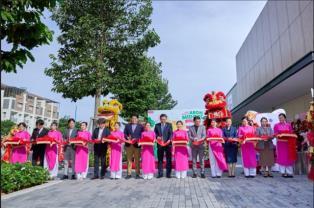CapitaLand Development (CLD) and Taseco Land have signed a memorandum of understanding for strategic co-operation, marking one of the most notable partnerships in Việt Nam’s real estate market this year.

HÀ NỘI — A landmark collaboration could reshape Việt Nam’s real estate market as CapitaLand Development (CLD) and Taseco Land sign a memorandum of understanding for strategic co-operation, marking one of the sector’s most notable partnerships this year.
The deal comes at a time when the property market remains sluggish, raising questions over whether such collaborations can spark a meaningful recovery. Rather than retreating, foreign developers are recalibrating their strategy—shifting from project acquisitions to long-term partnerships with domestic firms that bring execution capacity, local knowledge and a focus on sustainability.
With over 30 years in Việt Nam, CapitaLand appears to be pursuing deeper engagement instead of rapid expansion, while Taseco Land, active in residential, industrial and hospitality projects, brings a growing ecosystem and proven market presence.
Under the MoU, the two companies will research and develop housing, commercial centres and green industrial parks in key urban areas, reflecting current policy priorities on integrated development and sustainable infrastructure.
For CapitaLand, the partnership opens doors to new opportunities in a core market. For Taseco Land, it offers exposure to international planning, design and ESG standards, increasingly demanded by regulators, investors and homebuyers.
Analysts say the collaboration goes beyond capital contribution, aiming to include knowledge transfer and joint operations. This 'deep linkage' contrasts with previous years’ superficial alliances or simple project transfers.
Economist Lê Xuân Nghĩa said the MoU signaled that Vietnamese developers were strong enough to cooperate on equal footing with global corporations.
“This is a new model of cooperation—co-investing, co-developing and sharing long-term value,” he said, while cautioning that momentum will depend on actual project delivery rather than announcements.
Observers note that the MoU is only a starting point. A clear project pipeline, transparent legal procedures and the ability to meet sustainability commitments will determine whether the partnership delivers real market impact. Early projects such as an integrated township or green industrial park could set a new standard for cross-border development if successfully implemented.
While immediate breakthroughs may be limited, the agreement reflects a market shift: foreign capital is now seeking capable local partners, and Vietnamese developers are increasingly competing on competence, governance and long-term value. — VNS




